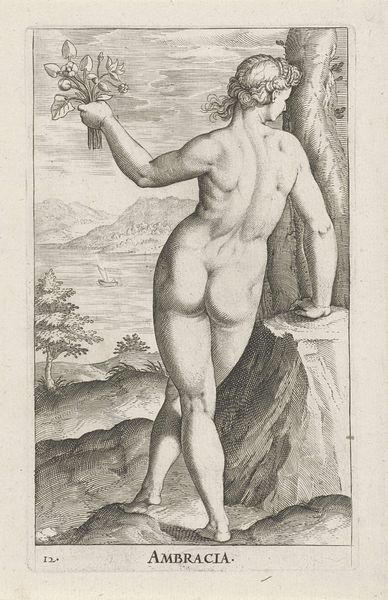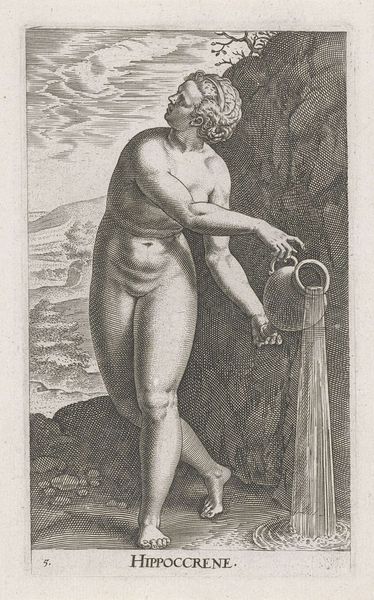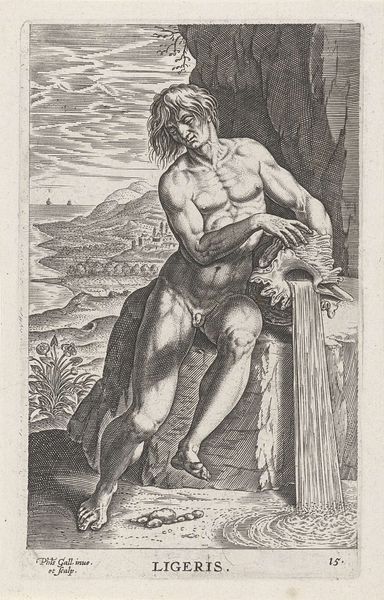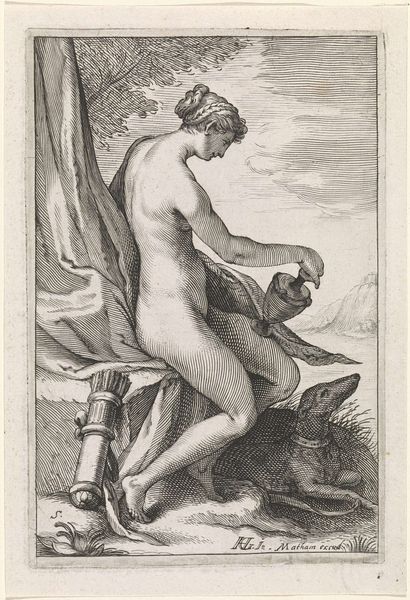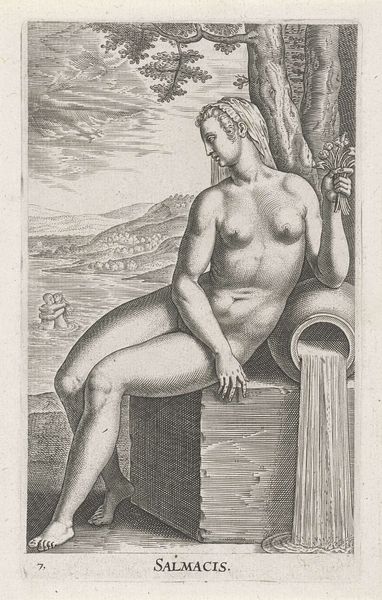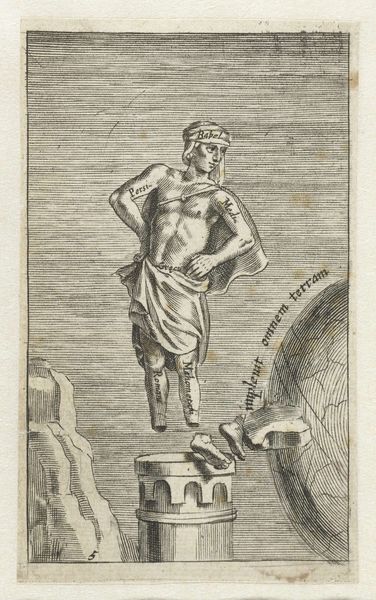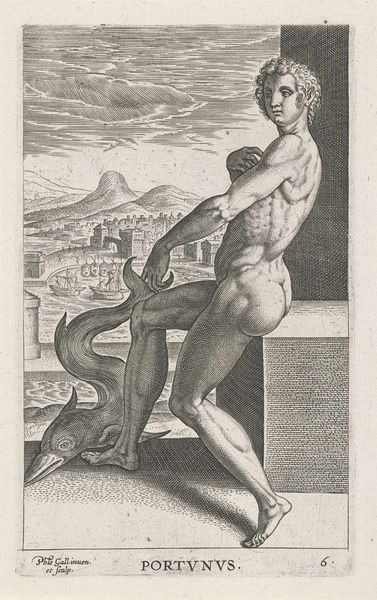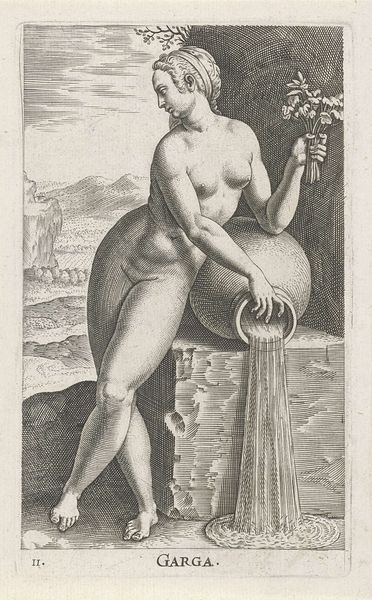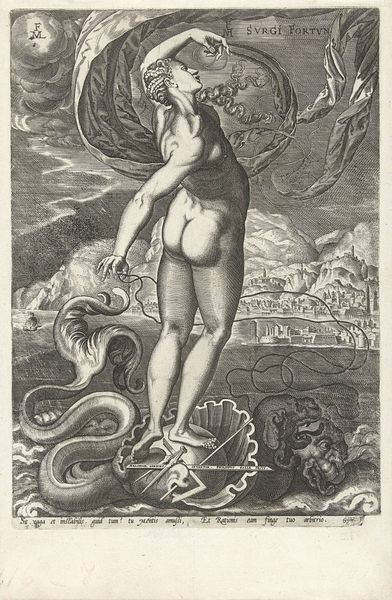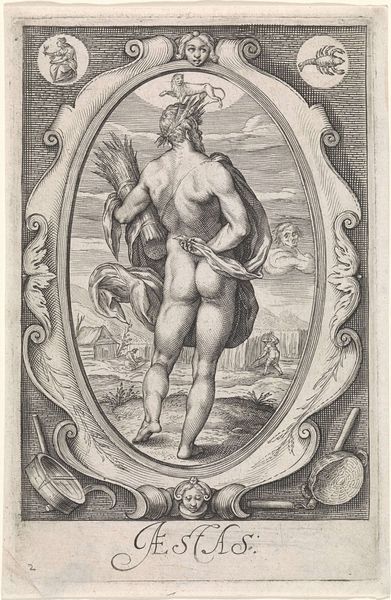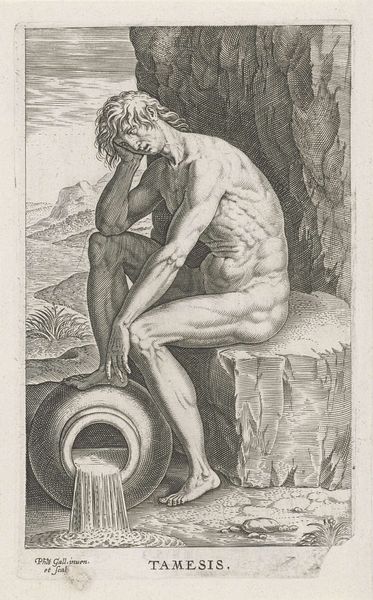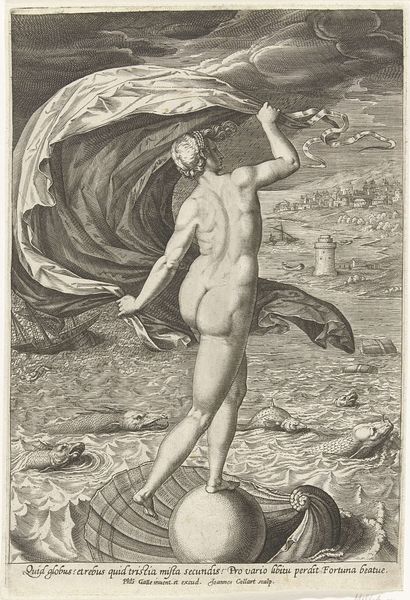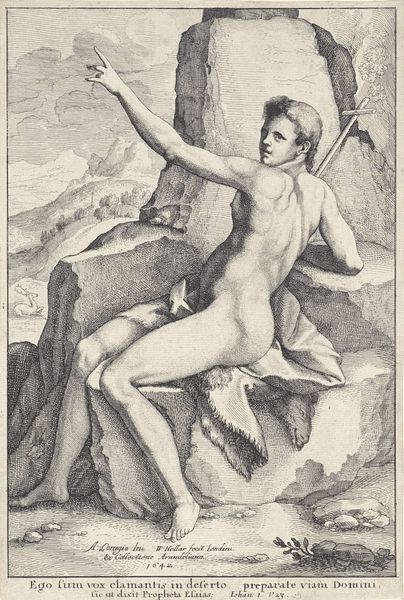
print, etching, engraving
# print
#
etching
#
old engraving style
#
landscape
#
mannerism
#
figuration
#
history-painting
#
nude
#
engraving
Dimensions: height 165 mm, width 101 mm
Copyright: Rijks Museum: Open Domain
Curator: Welcome. We're standing before "Waternimf Arethusa," an engraving and etching created around 1587 by Philips Galle. What catches your eye first? Editor: It's… striking. There's a real tension between the vulnerability of the figure and her muscularity. She’s like a marble statue trying to escape its block, you know? Powerful, yet confined, in a melancholic landscape. Curator: Yes, Galle has masterfully captured that paradox. Arethusa, in Greek mythology, was a nymph who was transformed into a spring to escape the advances of the river god Alpheus. Her pose and the surrounding landscape are laden with symbolism of transformation and escape. The bouquet of plants in her hand seems like a gesture towards a future, a blossoming perhaps? Editor: I love that reading. For me, the plants are more about offering. This whole scene feels ritualistic. The turn of her head, the dramatic landscape behind her… It suggests a deeper connection to the land and the gods of antiquity. What do you make of the urn behind her? It has a meaning, no doubt. Curator: Ah, the urn! It does suggest her imminent transformation, the moment she will pour herself into her new liquid form. It reminds me of how Ovid described it: Arethusa as both actor and acted-upon, a poignant paradox. It feels as if she carries within her all that once was. Galle uses that to highlight her inner struggle. Editor: And that struggle translates so well into this highly stylized, almost artificial landscape. Those aren't mountains, they're like stylized desires made manifest, physical hurdles that she will overcome, becoming the water nymph as spring. So it speaks about overcoming of challenges by acceptance and change, which is empowering. Curator: Absolutely. I see this work as an exploration of the boundaries of the body and the spirit, a meditation on what it means to be both powerful and vulnerable. Editor: And for me, "Waternimf Arethusa" becomes a timeless meditation on the idea of metamorphosis itself. Water, transformation and the ever-flowing rhythm of renewal are strong. Curator: A wonderful way to see this work, truly. Thank you!
Comments
No comments
Be the first to comment and join the conversation on the ultimate creative platform.
